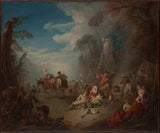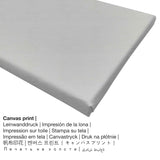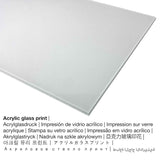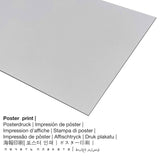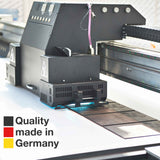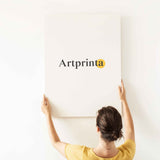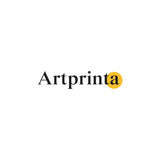Jean-Baptiste Joseph Pater, 1725 - Ndị agha nọ na ezumike - mbipụta nka mara mma
Ụtụ gụnyere. Mbupu gbakọrọ na ndenye ọpụpụ.
Ozi banyere ngwaahịa a
In 1725 na French painter Jean-Baptiste Joseph Pater painted this classic art work of art named "Troops at Rest". Ụdị nke eserese ahụ nwere nha nha 21 1/4 x 25 3/4 na (54 x 65,4 cm) na e mere na ọkara mmanụ na kwaaji. The artwork gụnyere na art collection nke Museumlọ ihe ngosi nka nke Obodo, nke bụ otu n'ime ụlọ ngosi ihe ngosi nka kachasị ukwuu na nke kachasị mma n'ụwa, nke gụnyere ihe karịrị nde abụọ ọrụ nka na-agbatị puku afọ ise nke omenala ụwa, site na prehistory ruo ugbu a na site n'akụkụ ọ bụla nke ụwa .. Nke a ngalaba ọha a na-enye masterpiece site n'ikike nke Ụlọ ihe ngosi nka nke Metropolitan, New York, Arịrịọ nke Ethel Tod Humphrys, 1956. Furthermore, the artwork has the creditline: Bequest of Ethel Tod Humphrys, 1956. Furthermore, alignment is in landscape format with an image ratio of 1.2: 1, nke pụtara na ogologo bụ 20% ogologo karịa obosara.
(© - Ụlọ ihe ngosi nka nke obodo ukwu - Museumlọ ihe ngosi nka nke Obodo)
The imaginary setting comprises delicately painted trees, a ruined tower, and an encampment of several tents. The figures are arranged in a rough semi-circle against a bright but fog-shrouded middle distance. They dismount from their horses and mules, gather at trestle tables, and smoke and talk by the campfire. Among the soldiers, Pater depicts the women and children who followed them.
Data nka ahaziri
| Iberibe aha nka: | "Troops at Rest" |
| Nhazi nka: | sere |
| Otu sara mbara: | nka ochie |
| Nhazi oge: | 18th narị afọ |
| Afọ nka: | 1725 |
| Ogologo afọ nka nka: | karịa afọ 290 |
| Usoro izizi: | mmanụ na kwaaji |
| Akụkụ izizi nka: | 21 1/4 x 25 3/4 na (54 x 65,4 cm) |
| Ụlọ ihe ngosi nka / mkpokọta: | Museumlọ ihe ngosi nka nke Obodo |
| Ebe ngosi nka: | New York City, New York, Njikota Obodo Amerika |
| Dị n'okpuru: | Museumlọ ihe ngosi nka nke Obodo |
| Ụdị ikike nka: | ngalaba ọha |
| Site n'aka: | Ụlọ ihe ngosi nka nke Metropolitan, New York, Arịrịọ nke Ethel Tod Humphrys, 1956 |
| Ebe E Si Nweta: | Arịrịọ nke Ethel Tod Humphrys, 1956 |
Ihe omuma ihe nka
| Aha onye nka: | Jean-Baptiste Joseph Pater |
| okike nke onye nka: | nwoke |
| Obodo onye nka: | French |
| Ọrụ: | onye na-ese ihe |
| Obodo obibi: | France |
| Otu nka: | nna ukwu ochie |
| Ndụ: | 41 afọ |
| A mụrụ: | 1695 |
| Nwuru: | 1736 |
Nye iwu ihe ị ga-achọ inwe
Na menu ndọpụta ngwaahịa ị nwere ike họrọ ihe na nha ọkacha mmasị gị. Anyị na-ahapụ gị ka ịhọrọ n'ime ụdị ndị a:
- Mbipụta kanvas: A canvas print, which should not be confused with a real artwork painted on a canvas, is a digital copy printed on a UV direct printer. A canvas generates a extra look of three-dimensionality. Canvas prints are relatively low in weight, which means that it is easy to hang your Canvas print without the help of extra wall-mounts. Canvas prints are suited for all types of walls.
- Mpempe akwụkwọ mmado ebipụtara na akwa akwa: A poster is a UV printed flat cotton canvas with a granular texture on the surface, which resembles the original work of art. It is perfectly designed for placing the art print using a custom-made frame. Please keep in mind, that depending on the size of the poster print we add a white margin of something between 2-6cm round about the print, which facilitates the framing with your custom frame.
- Ugogbe acrylic ebipụtara: A glossy print on acrylic glass, which is often referenced as a print on plexiglass, changes your favorite artwork into lovely décor and forms a viable alternative to dibond or canvas fine art prints. The artwork is being manufactured with state-of-the-art UV direct printing technology. The effect of this are rich and impressive color tones. Our plexiglass with real glass coating protects your selected art print against light and external influences for up to 60 years.
- Mbipụta aluminom (aluminium dibbond): These are metal prints on aluminium dibond material with an outstanding depth. The UV print on aluminium is one of the most demanded entry-level products and is an extremely contemporary way to display fine art prints, since it draws attention on the image.
Tebụl ngwaahịa
| Bipụta ụdị ngwaahịa: | nka nka |
| Mmeputakwa: | dijitalụ mmeputakwa |
| Production usoro: | UV kpọmkwem obibi |
| Nlụpụta: | emepụtara na Germany |
| Stockdị ngwaahịa: | na mmepụta ihe |
| Eji ngwaahịa a chọrọ: | foto mgbidi, mma mgbidi |
| Nhazi nka nka: | nhazi odida obodo |
| Njikwa oyiyi: | 1.2: 1 - ogologo: obosara |
| Ihe: | ogologo bụ 20% ogologo karịa obosara |
| Nhọrọ ihe dị: | ígwè ebipụta (aluminium dibond), acrylic glass print (nwere ezigbo mkpuchi iko), mbipụta akwa akwa, mbipụta akwụkwọ mmado (akwụkwọ kwaaji) |
| Nhọrọ nke Canvas Mbipụta (akwa akwa na etiti ihe ndọtị): | 60x50cm - 24x20", 120x100cm - 47x39" |
| Mbipụta iko acrylic (nwere ezigbo mkpuchi iko) nhọrọ nha: | 60x50cm - 24x20", 120x100cm - 47x39" |
| Mbipụta akwụkwọ mmado (akwụkwọ kwaaji): | 60x50cm - 24x20", 120x100cm - 47x39" |
| Ụdị mbipụta aluminom dibond: | 60x50cm - 24x20", 120x100cm - 47x39" |
| Igwe onyonyo: | na-enweghị etiti |
Nkwupụta iwu: We try what we can to depict the art products with as many details as possible and to demonstrate them visually on the different product detail pages. Still, the pigments of the printed materials and the imprint might differ somehwat from the image on your device's monitor. Depending on your settings of your screen and the condition of the surface, color pigments might not be printed as realistically as the digital version shown here. Given that our are processed and printed by hand, there may also be minor variations in the motif's exact position and the size.
© Copyright - Artprinta.com

